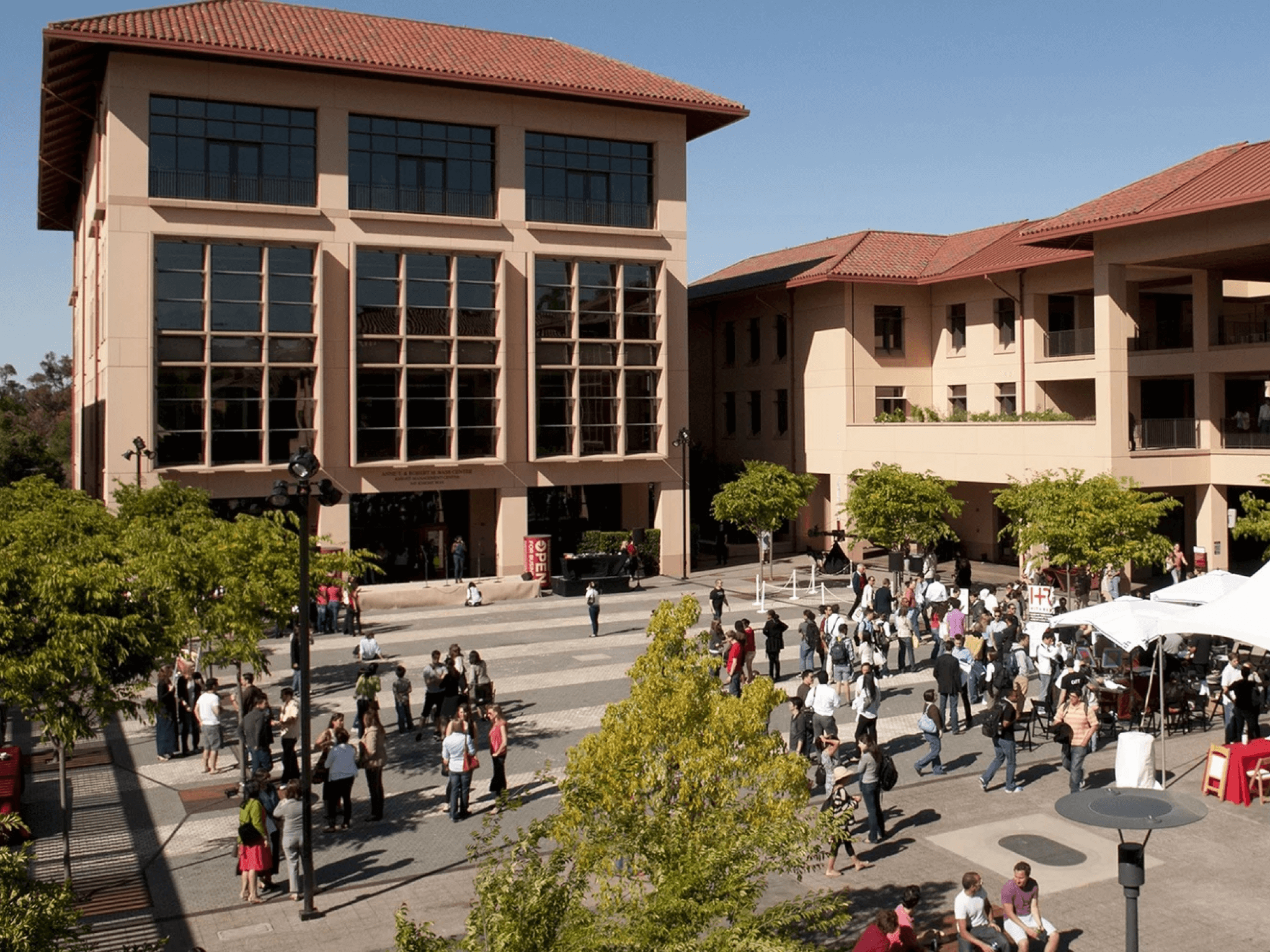Stanford GSB MBA Admissions: 2025–2026 Guide
To create ideas that deepen and advance our understanding of management and with those ideas to develop innovative, principled, and insightful leaders who change the world.

Last updated: August 2025 — Includes new 2026 MBA deadlines, updated class profile data, and the latest essay prompt changes.
🎯 Why Stanford GSB?
Stanford Graduate School of Business is the most selective MBA program in the world, admitting just ~6–7% of applicants each year. Its reputation rests on world-class faculty, small class size, and unparalleled proximity to Silicon Valley.
Stanford GSB is known for producing transformational leaders who thrive in high-growth, high-impact settings. Alumni include Nike founder Phil Knight, GM CEO Mary Barra, Netflix co-founder Reed Hastings, and U.S. Senator Cory Booker.
👉 Stanford GSB MBA Program Overview
📅 Application Deadlines (Class of 2028 Entry)
Round 1
Application Deadline: September 10, 2025
Decision Released: December 11, 2025
Round 2
Application Deadline: January 8, 2026
Decision Released: April 2, 2026
Round 3
Application Deadline: April 8, 2026
Decision Released: May 21, 2026
👉 Stanford GSB Application Deadlines
📝 Stanford GSB Essays (2025–2026 Cycle)
- Essay A: What matters most to you, and why?
- Essay B: Why Stanford?
These two essays are core to GSB’s identity. Essay A demands vulnerability and self-reflection — Stanford is less concerned with what you’ve achieved and more with why you make the choices you do. Essay B ties your aspirations to Stanford’s unique resources.
👉 Stanford GSB Application Essays
👩🎓 Class Profile (MBA Class of 2026)
- Class Size: ~431 students
- Acceptance Rate: ~6%
- Average GMAT: 738
- Average GPA: 3.77
- Work Experience: 5 years (avg)
- Women: 46%
- International: 47%
💼 Careers After Stanford GSB
Stanford grads enjoy access to top firms in consulting, finance, and tech, but the school stands out for entrepreneurship. Roughly 15–18% of each class launches a venture within a few years of graduation.
Median base salary for the Class of 2024 was $182,500 with a $30K signing bonus, matching HBS at the top of the MBA market.
👉 Stanford GSB Employment Report
🌍 International Applicants
Nearly half the class comes from outside the U.S., making GSB one of the most globally diverse MBA programs. The school offers strong support for visas, career placement, and STEM-eligible MBA tracks for extended work authorization.
👉 Stanford GSB International Students
📚 Inside the Stanford MBA Experience
Signature experiences include:
- “Touchy Feely” (Interpersonal Dynamics): Famous for shaping emotionally intelligent leaders.
- Startup Garage: A hands-on course for building and funding ventures.
- Leadership Labs & Arbuckle Leadership Fellows: Structured leadership training unmatched by peer schools.
Students also cross-register widely with Stanford Law, Engineering, and the d.school.
👉 Stanford GSB Curriculum & Courses
❓ FAQs
Is there an age limit for Stanford GSB?
No. While the average age is 27, students range from early 20s to late 30s.
What GPA and test scores are competitive?
Average GPA is ~3.77. Median GMAT is 738 (middle 80% range: 690–770).
Does Stanford prefer the GMAT over the GRE?
No. Both are accepted. Roughly two-thirds of applicants submit the GMAT, one-third the GRE.
How selective is Stanford GSB?
Extremely. Acceptance rates are ~6–7%, the lowest of any MBA program worldwide. About 430 students enroll each year.
Can I reapply if rejected?
Yes. Stanford encourages reapplicants, but they expect clear evidence of growth.
Does Stanford offer scholarships or financial aid?
Yes. All admits are considered for need-based fellowships. About half of MBA students receive financial support.
What are common post-MBA careers?
Consulting, private equity/venture capital, tech leadership, and entrepreneurship (15–18% launch ventures within a few years).
What’s unique about Stanford’s teaching style?
A mix of case method, lectures, and experiential courses. Signature offerings include “Touchy Feely,” Startup Garage, and Leadership Labs.
Does Stanford have joint degree programs?
Yes. Options include JD/MBA with Stanford Law, MS in Computer Science/MBA, MPP/MBA, and MD/MBA.
🤝 Work With M7A
Applying to Stanford GSB is one of the toughest challenges in MBA admissions. Our team of M7 grads helps you position your essays, sharpen your story, and maximize your odds.